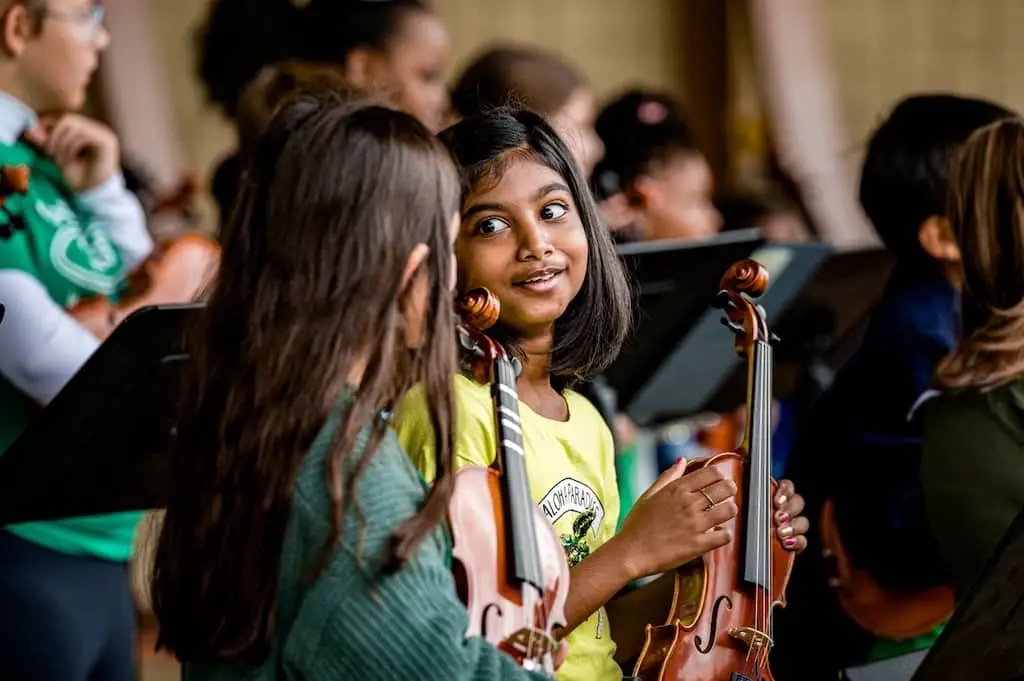Picture the typical student today: their eyes tired from looking at screens for hours, carrying a heavy backpack full of thick textbooks, and having a jam-packed schedule. Now, think about a different scenario – a short break inserted into their busy day to take a breath and recharge. The topic of ‘Why It’s Important to Give Students Breaks’ explores this idea. It highlights how giving students regular intervals to rest is extremely important because it can greatly affect their school performance, mental health, and overall happiness.
Benefits Associated with Rest :
Taking breaks during the school day, like short pauses in class or the longer recess break, isn’t just a time to relax for students. These breaks actually help them work better and give them opportunities to be more creative and improve their social skills.
Many students, especially younger ones, find it hard to stay focused for long. A study by psychologist Karrie Godwin in 2016 showed that elementary students were distracted for over a quarter of class time. Shorter lessons, like 10 minutes instead of 30, kept their attention better. This suggests that taking breaks is truly beneficial for students.
Here, we will explore 5 advantages associated with rest
#1. Reduce Stress and Increase Productivity
New research reveals that our brains stay active during breaks, processing memories and making sense of experiences. In a 2012 study, Mary Helen Immordino-Yang and colleagues used an FMRI scanner to study brain activity during the “default mode,” a resting state. Surprisingly, the brain remains highly active during this state, engaging different regions than when focused.
This default mode turns out to be vital for memory consolidation, reflecting on experiences, and planning for the future—shaping how we understand our lives. Breaks aren’t idle; they’re crucial for cognitive functions like reading comprehension and generating new ideas, proving that rest isn’t wasted time but rather an essential aspect of productivity.
Having regular breaks during the school day can also reduce disruptive behavior. Studies suggest that including short physical activity breaks in the classroom can improve student behavior.
#2. Boosts Energy
Taking breaks is crucial for students to recharge their energy levels. It allows their bodies and minds to take a much-needed pause from demanding school work, which helps with remembering and learning. Even short breaks during the day can revitalize a student’s ability to concentrate and be creative.
Consistently taking time to rest is like recharging a battery, and it helps students stay energized, focused, and ready to tackle academic obstacles with renewed determination.
#3. Enhance Motivation and Focus

Motivation is extremely important when it comes to doing well in school. If students start to lose motivation, they may end up putting off their work, which can cause their academic performance to suffer. Taking short breaks in between study sessions can be really helpful in recharging students and boosting their motivation. When they take a break and then come back to their studies, they feel more energized and ready to concentrate.
#4. Improves Physical Health
Incorporating breaks for students can play a pivotal role in improving physical health. Firstly, it reduces sedentary behavior as regular breaks stimulate movement, that reduces the risk of conditions such as obesity and cardiovascular diseases associated with prolonged sitting.
When students take part in physical activity during breaks, it helps reduce stress and brings about relaxation. These active breaks can strengthen the immune system, making students less likely to get sick.
Moreover, these active breaks promote better posture, preventing muscle and bone problems. Physical activity during breaks also improves blood circulation, contributing to overall health.
#5. Develop Social Skills
Playtime Teaches Essential Life Skills for Kids. Research proves that when children play together, they learn to take turns, solve problems, and handle emotions—key skills for life. Skipping recess is a mistake, says the American Academy of Pediatrics, as it’s crucial for a child’s development, and sacrificing it for more academics doesn’t help.
Some Breaktime Activities for Students :
Outdoor Games
Incorporating outdoor games during break time is strongly recommended for students. Apart from serving as a fun and enjoyable diversion, such activities facilitate regular physical exercise, essential for maintaining good health and combating lifestyle diseases. Outdoor games also encourage social interaction and teamwork.
Visit the Library
The library is a peaceful place where students can unwind and concentrate. It offers a wide range of books for students to explore, which helps expand their understanding and inspire their imagination. Moreover, reading can reduce stress and enhance vocabulary and language abilities. Regularly visiting the library during breaks also encourages students to develop good reading habits, which complements their academic learning and fosters intellectual growth.
Enjoy Art or Music

Promoting art or music as a breaktime activity for students can be incredibly beneficial. Engaging in such creative pursuits allows students a respite from academic rigour and provides an outlet for self-expression. Painting, sketching, or playing a musical instrument can enhance their cognitive abilities as well as fine motor skills. These activities also foster emotional well-being by reducing stress and anxiety
Practice Yoga
Yoga is a great way for students to take a break from their studies. It helps them relax and focus better by teaching them to be mindful of the present moment. Yoga can also improve their physical fitness by increasing their strength, flexibility, and balance. Additionally, the breathing exercises in yoga can reduce stress, which is important for their overall health.



